Now that title has driven away everyone not looking for tips on how to do a particular procedure on a 36′ cherubini hunter, lets get to it.
It was time for the annual haulout, a procedure that last time was quite frankly, pretty damn terrible so I was determined that this time would be different. I was going to do the whole thing myself without yard help, I wasn’t horribly sad AND I had help from the ever-lovely Emma!
After an uneventful trip, we arrived at the boatyard and Gudgeon got hauled out, a process that still terrifies me. Basically the boat is picked up in a huge sling and dropped on a trailer which then drops it on some very thin looking stands. As I live on my boat, that means for all intents and purposes I now live in a boatyard, on stilts. Like a magic sky castle, but shit.
Once that had all completed, next step was to get all up in them rudder GUTS.
Except I had no idea how any of it worked, and I couldn’t find anything on the internet as the company that made the thing is now defunct. So basically I had to muddle my way through it slowly, and this is what I figured out
Basically the rudder shaft comes through the hull, through a fiberglass cone which has a hose over it, the other end of the hose leads to a stuffing box (a metal thing filled with flax that allows the shaft to turn while not letting water through). Above that is clamped the steering quadrant that has control lines attached to it to allow the cables to pull the rudder around. Next, the shaft goes through the cockpit floor and is held up by a metal collar, that bolts onto the shaft and rests on a plastic block, bolted to a floor of plywood. The end of the shaft continues upwards through the top of the rear locker, which helps stabilises it.
I figured this all out after several hours of hanging outside down in the rear cockpit lazarette and swearing up a storm as I caught every possible bit of my tender pale body on a sharp/point/hard edge, and finally managed to drop the rudder to the ground, allowing me to pull everything off.
Here is the quadrant assembled (sorry about the SUPER SPOOOOOOKY picture)
and disassembled
This is the stuffing box
As you can see, it looks like its seen better days.
Emma volunteered to clean it and banged away at it for a bit
With amazing results!
WOA!
Next, I had to repack it, which turned out to be dead easy. Get some flax of the right size (3/16″ if interested), cut it to length and then wind it round the inside of the top half of the box. It should take 3 loops. Make sure the ‘seams’ don’t overlap one another. You can then screw on the bottom half using the four screws
The last bit of stuff to replace was the hose, which was a matter of buying new hose and squeezing it on. I also replaced the hose clamps with new T clamps which are a lot more heavy duty.
Wait, the last bit of stuff to replace? NOT SO FAST, SIR. I found that the bit of plywood that the collar rests on, and therefore holds up the rudder was actually pretty rotten and messed up
Hmm. So I hard to go buy a new bit of plywood and have it cut to shape, and then drill more holes and attach the hardware to the correct places etc. BORING, but needed to be done
Then I just had to thread everything back on the shaft
And reraise the rudder!
Done! Actually, not quite – there were two ‘skeg flaps’, pieces of plastic attached over the top part of the rudder for some reason. They were attached by just drilling directly into the hull with screws. This could have been a possible leak source so I removed them and just fiberglassed over the whole thing. Taking no chances! NOW I’M DONE
Things I have left out from this account
- spending 5 hours trying and failing to reattach the cables to the quadrant, needing to drop and raise the rudder each time, before finding out that I was hooking them up totally wrong
- On at least two occasions, raising the rudder up and finding I had forgot to put a part on
- The amount of times I dropped stuff into the rear bilge. It’s like the normal bilge, but a lot hard to get stuff out of.
- The least helpful lumber people EVER. It was their first time using the lumber saw. Scary stuff.
- I cut the hose too short so had to get more hose. And then ripped up the packing in the stuffing box, meaning I had to get more.
Overall it took way WAY longer than I had planned, probably a solid 20 hours in total. However, hopefully I fixed the leak from back there and now I know how all that stuff back there works!
I worked out where to install the tiller arm for the autopilot and realised I need to change out the control cables. They are looking pretty dodgy! Also gonna add some reinforcement to that plywood and paint it. I’ll do that on the water, possibly next week.






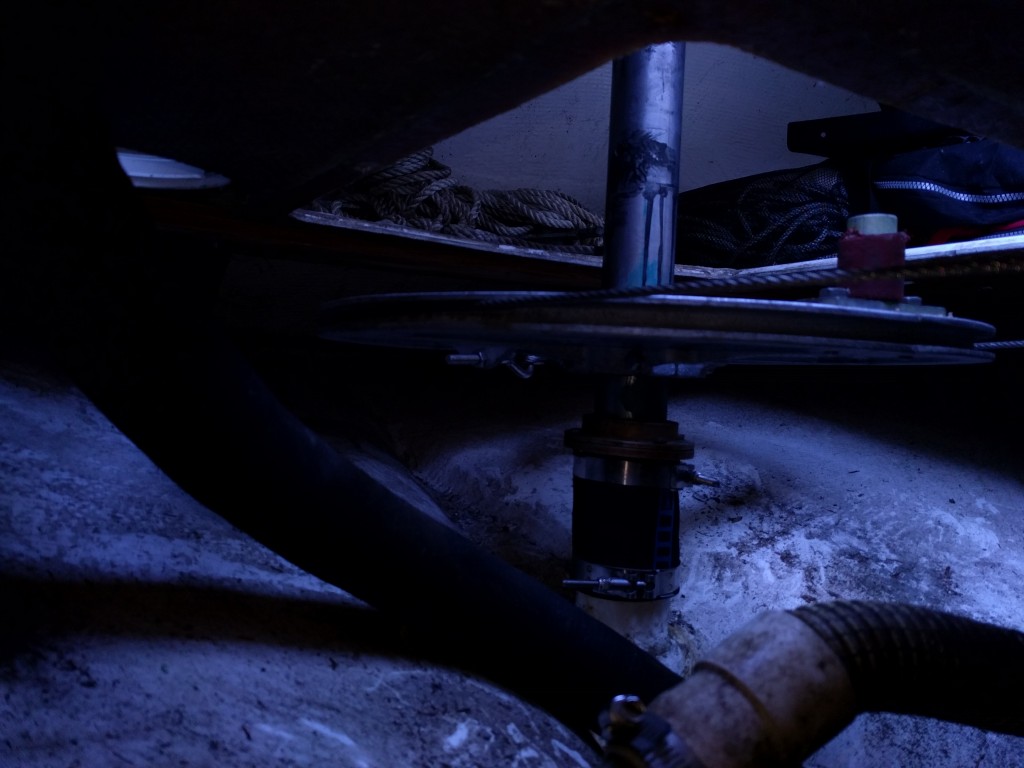


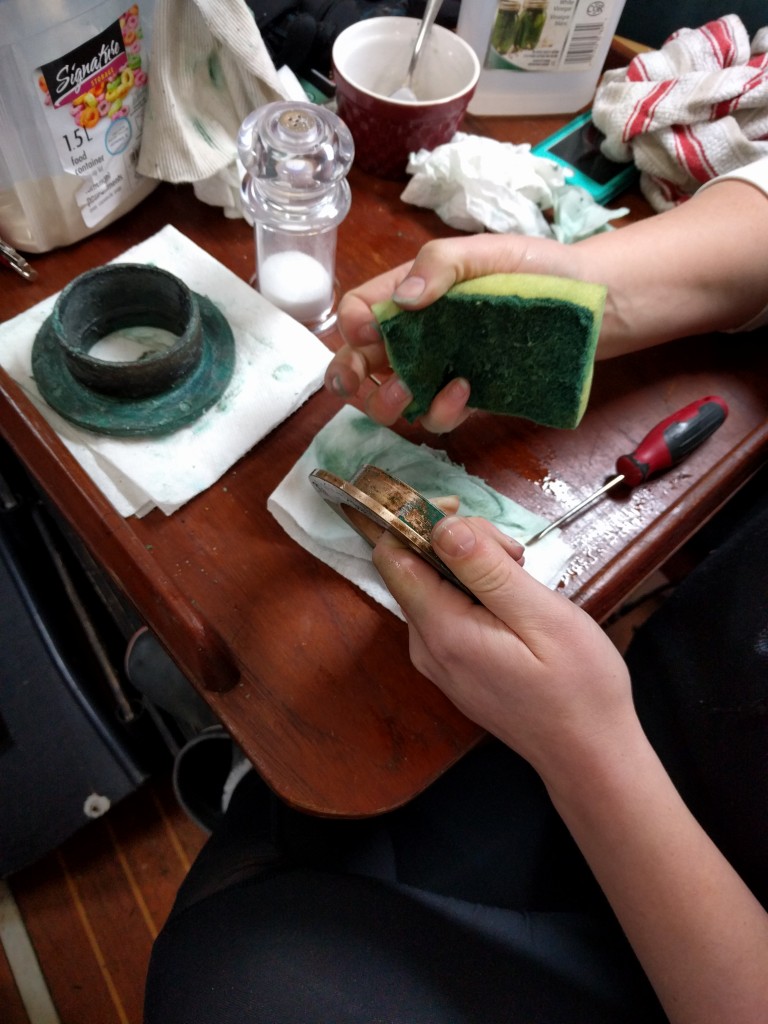

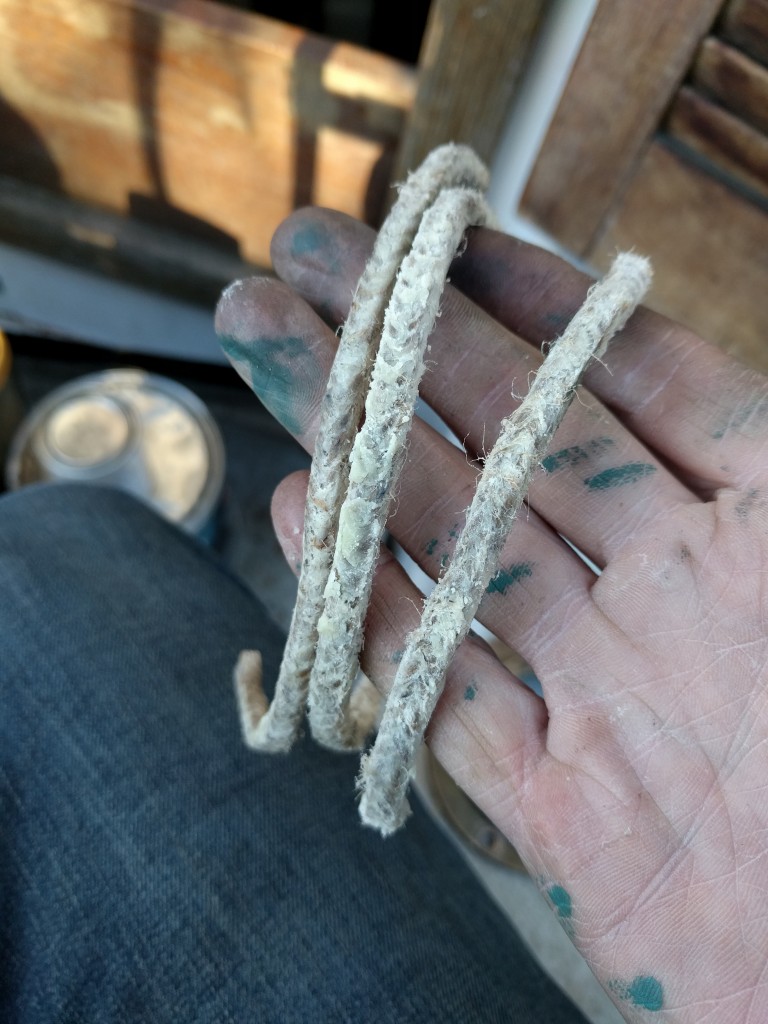

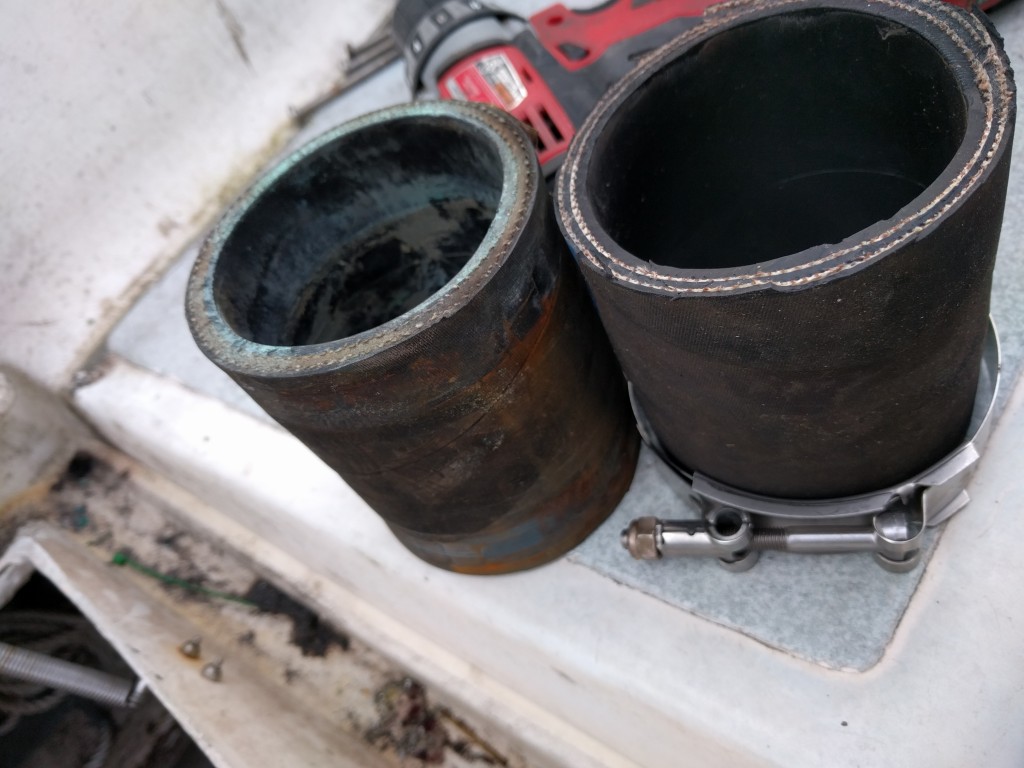

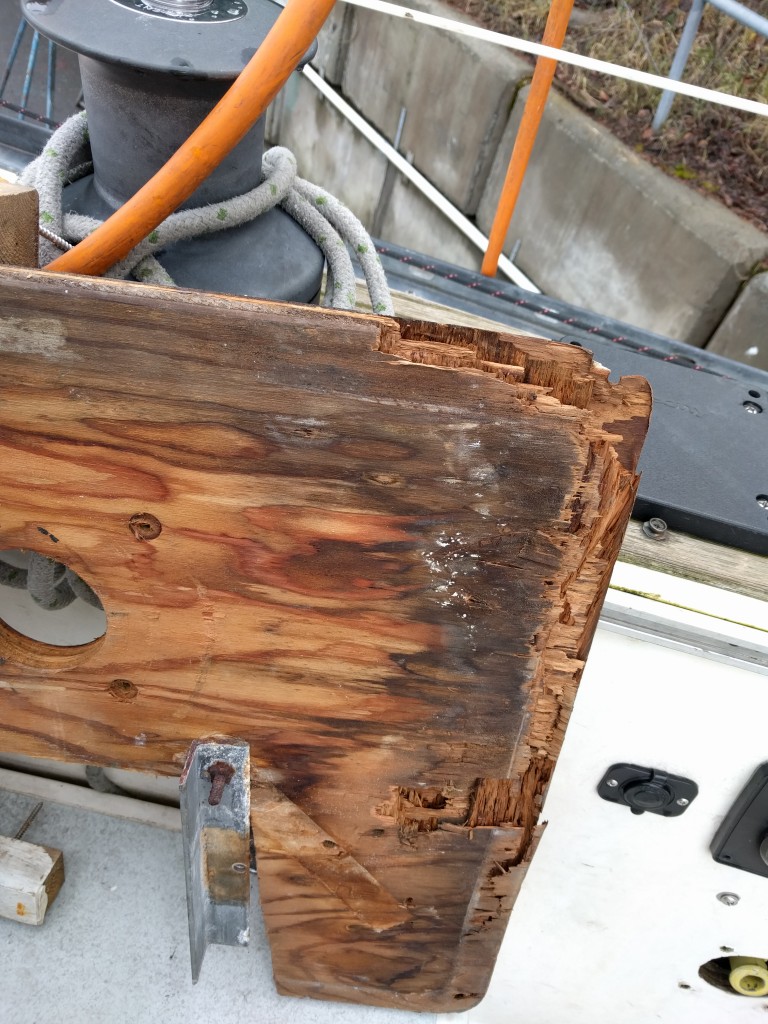



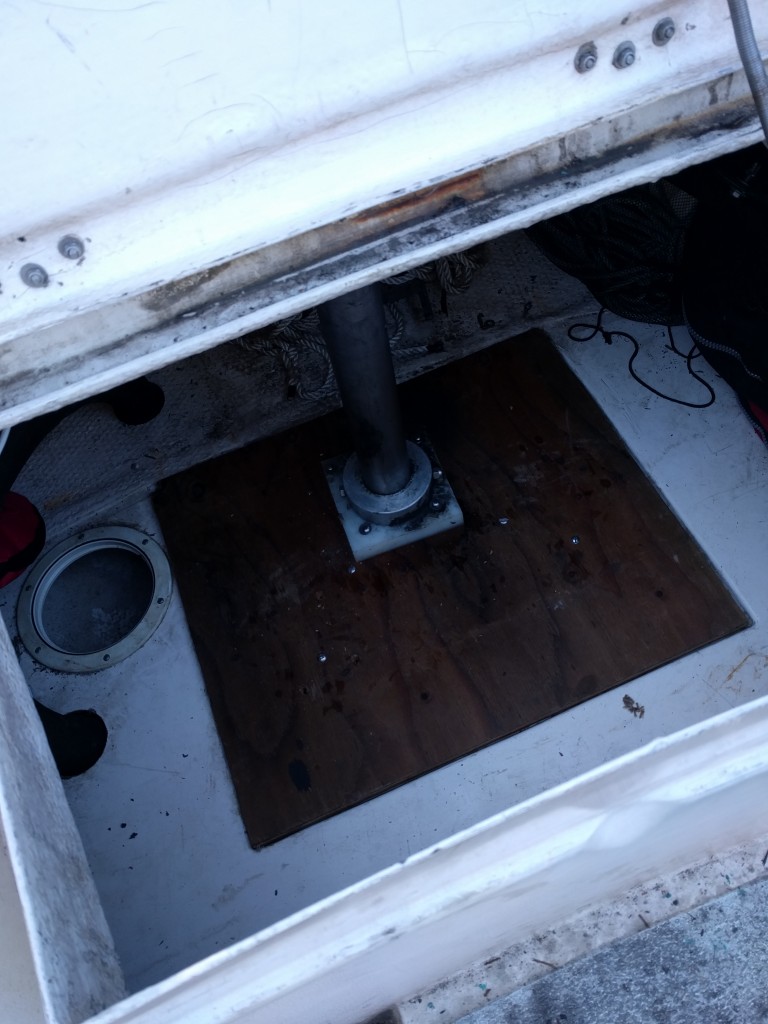

Where did you do your haul out and how long were you on the hard?
I tend to go to Westport Marina in Sidney, BC – mainly because they are half price from October to February. I was out for three days this time, a new record!
I was, and am, very impressed Matt. However … I do hope that THIS “there were two ‘skeg flaps’, pieces of plastic attached over the top part of the rudder for some reason” doesn’t bite you in the bum in some future scenario. A bit like “when I reassembled the engine there were these 2 springs left, but I couldn’t see a need for them” … Very impressive.
Thanks Simon!
I realise I came off as pretty cavalier in my discarding of the flaps, but I asked around on the internet and the consensus from others with the same model of boat was that half of them had removed them, and hadn’t seen any difference. If there WAS a difference, it was very slight, and was performance rather than safety related. Apparently to gain any benefit from them the plastic has to be flexible – mine had hardened and flared out. I kept the old flaps, and down the road I may use them as a template and cut new ones out of plastic.
Great blog. Found you on the Forrest Stevens youtube channel. I like all the hard work you’re putting into this Hunter. She has beautiful lines. I’m curious, how difficult was it to drop the rudder, was it a two person job? I just purchased a 1980 C&C 30 this past summer and I’ll need to do the same. Trying to wrap my head around it.
Thanks Chris! It was definitely doable just by myself, two people would have helped (like most boat jobs). Should be very doable yourself, it’s just a really small space